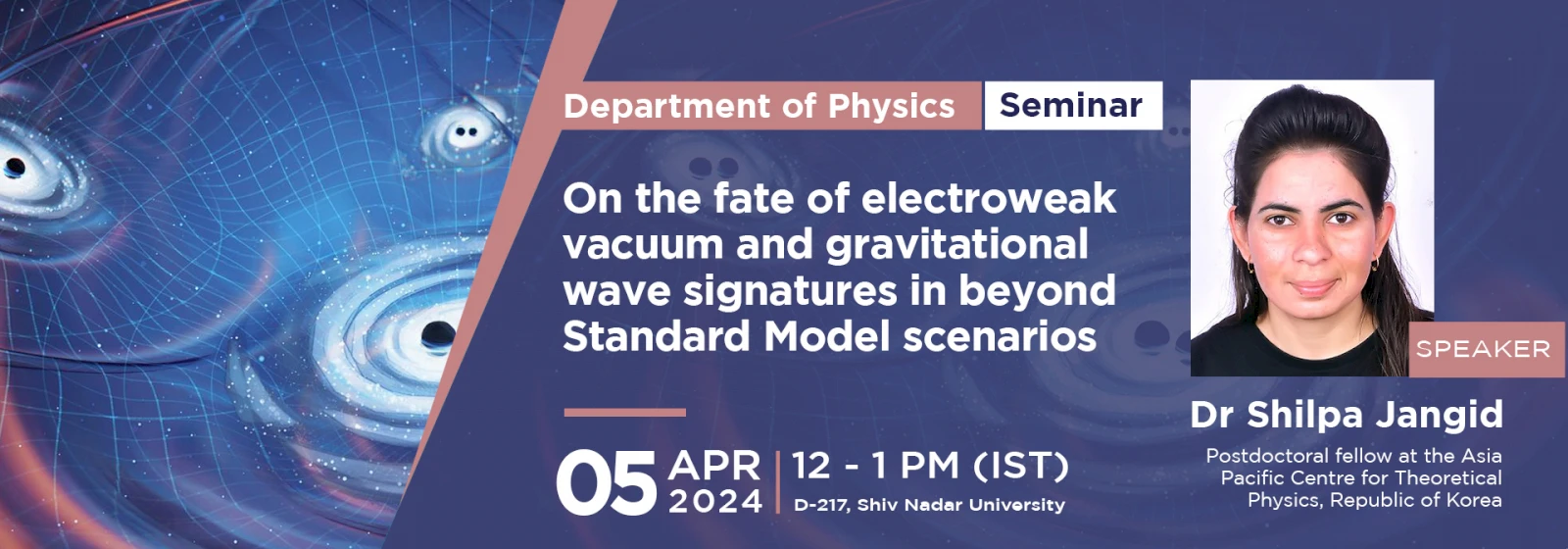On the fate of electroweak vacuum and gravitational wave signatures in beyond Standard Model scenarios
Abstract: The electroweak vacuum, mainly at zero temperature, is investigated as how the quantum fluctuations affect and constrain different beyond Standard Model (BSM) extensions.The quantum fluctuations can lead to a second minimum of the potential, which can be a stable global minimum. The Standard Model falls within the possibility of metastability, which means there can be a deeper minimum. Various beyond Standard-Model scenarios get bounds from the possibilities of vacuum instability or metastability. It has been seen that the extension of the SM with a scalar, in general, gives more stability to the vacuum, but the scalar quartic couplings get strong bounds from the perturbative unitarity. Different contributions with non-trivial gauge representation can tamper with the behaviour of the SM gauge couplings as well, which are also shown explicitly.
Another fundamental question of our existence is called electroweak baryogenesis, which requires the first-order phase transition of the electroweak vacuum. The cubic term in the scalar potential is very crucial to achieving the first-order phase transition, which is generally not contributing enough in the SM and most of the minimal scenarios at the tree-level potential at zero temperature. However, finite temperature corrections can provide the much-needed cubic term. These strong first-order phase transitions can generate shock waves, popularly known as gravitational waves (GW), which can be detected by present and future experiments.
All are cordially invited.

Share this: